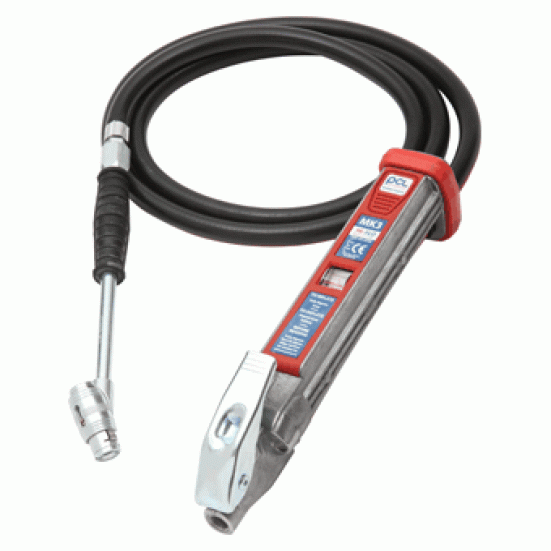
This small concise and lightweight gauge is ideal for keeping in the glove box.
Comes with hook for attaching to item of clothing, clipboard etc.
Checking your tyres regularly will save money on tyres in the long run as they wear more evenly if inflated correctly. Poorly inflated tyres wear quicker which will mean more changes.
This gauge is a great little investment which will help save you money on services and MOT tests.
If you own a car, one of the most important things you should consistently do is to check the pressure of your tyres. It may not be that much but the importance of having an analog or digital tyre pressure gauge and checking the air of your tyres can save you money and even prevent freak accidents in the long run. Maintaining the proper pressure in your tyres ensures better driving and better fuel management for your car.
What is a tyre pressure gauge?
Simply put, a tyre pressure gauge is a device you use in order to check the pressure of your car’s tires. There are plenty of ways with which you can get your hand on these devices. But for most cars manufactured today, the tyre pressure gauge itself is already built in and you can directly check your tire’s pressure even while you drive.
Most manufacturers rate the cars they produce by the specific loads they can carry at certain tyre pressures. This makes a tyre pressure gauge important in assessing the condition of your car.
Certain factors that change your tyre pressure
Plenty of factors affect the air pressure of your car’s tyres. It can also change multiple times during the course of the day. The conditions of the environment (such as changing temperatures) where your car is being used can contribute up to a 15% change in your tyre’s pressure.
Altitude and the regularity of use are also important factors contributing to the change in pressure. If you want to keep your cars in top driving condition then it is advisable to you consistently check your tyre pressure every day or at least once a week.
How do you properly use a tyre pressure gauge?
If you have already been convinced about the importance of measuring your tyre pressure, you should then learn how to properly assess your tyres using a gauge. Know first what is the required PSI (pounds per square inch) for your set of tires. The tyre’s manufacturer usually embeds this info on the side of their products.
Take note that the PSI written on your tyres are usually the maximum PSI for the tyre. To check this, you can refer to your car’s manual or ask your mechanic on what the ideal PSI would be. As much as possible, maintain this PSI on your tyres.
Many car owners overlook the importance of a well-maintained set of tyres for their cars. If you want to save up on fuel or avoid accidents in the road involving under-pressured or flat tyres, then investing in a good pressure gauge is the way for you to go.










